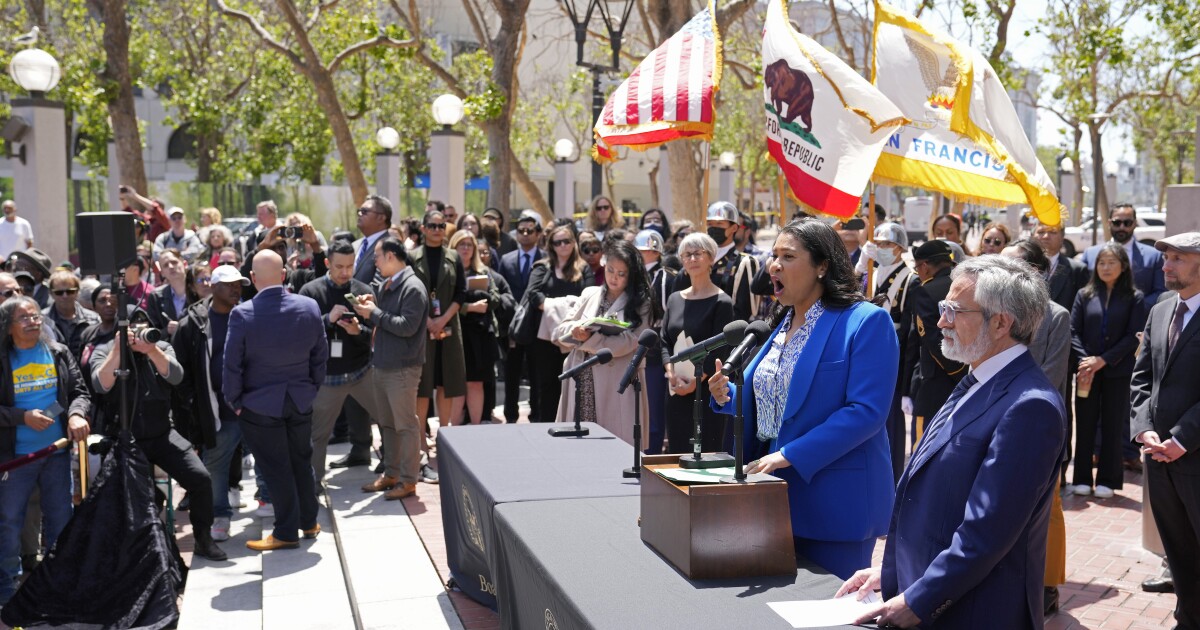

San Francisco has seen a sharp increase in drug use and addiction in recent years, creating a worrying impact on the city’s economy and eroding businesses, the housing market, and public safety.
With overdose deaths in San Francisco rising this year, it is on track to have the highest number of accidental overdose deaths in city history.
INFLATION DECLINED TO 3% IN JUNE, ACCORDING TO KEY GAUGE WATCHED BY FED
Despite the month of June resulting in a 32% drop in fatalities since May, according to data from the Medical Examiner’s Office, numbers indicate 2023 will be the deadliest year yet. Over 400 people have died from an accidental overdose from January to June, a 40% climb compared to the same time period last year.
The epidemic has been driven by the synthetic opioid fentanyl, which is being seized at record levels in the city’s open-air drug markets. The San Francisco Police Department collected enough fentanyl to result in 30 million lethal doses during the first two quarters of 2023. Almost 70 kilos of fentanyl were seized, according to the city’s Tenderloin Police Station, an area plagued by open-air drug use and dealings.
San Francisco leaders have long struggled to contain the city’s opioid crisis, with some pointing to the lack of comprehensive treatment options as a stalling factor. This year, the city has received federal assistance and used state resources in an attempt to curb the epidemic plaguing the streets, however, negative impacts on San Francisco’s operations still remain in place.
The impact on the economy
The opioid epidemic has economic impacts on a larger scale, harming the United States as a whole through workforce shortages and a lack of employment productivity.
Opioids were responsible for around 20% of approximately 6.3 million workers who were absent from the United States labor force in late 2022, according to research from the American Action Forum.
A study found there was a 50% increase in weekly median overdose deaths in San Francisco, analyzing data before and after the COVID-19 shelter-in-place health order on March 17, 2020.
On top of layoffs increasing in the tech field, a hotspot in the Bay Area, employees are fleeing the city’s downtown at an alarming rate since 2020. There are nearly 150,000 fewer office workers in San Fransisco than prior to the pandemic, according to data from the Budget and Legislative Analyst.
The housing markets on a decline
Empty offices due to an increase in working-from-home rates, a rise in homelessness, and drugs flooding the streets have contributed to San Francisco’s declining housing market.
The sale prices of existing homes in the city were down around 11% since May 2018, according to S&P Dow Jones. Data indicates San Francisco home prices are dropping quicker than any other city in the nation, which some experts indicate is a potential doom loop.
San Francisco homes increased to $1.2 million in May 2022, from around $900,000 in January 2020, according to Zillow data.
What lawmakers are doing
Earlier this year, Gov. Gavin Newsom (D-CA) deployed the National Guard to San Francisco to disrupt fentanyl trafficking, perhaps in one of the most combative moves to address the epidemic with the support of the city’s Mayor London Breed.
“These early results show promise and serve as a call to action: we must do more to clean up San Francisco’s streets, help those struggling with substance use, and eradicate fentanyl from our neighborhoods,” Newsom said in a press statement.
Breed has been enforcing a multi-agency operation launched this year that targets drugs in Tenderloin and South of Market neighborhoods.
“Our Police Department and District Attorney have been partnering to tackle this issue and increase enforcement, but our local agencies can use more support,” Breed said in a press release.
Breed has pledged to take action on the crisis by allocating additional funds in the city’s budget for Fiscal Years 2023-2024 and 2024-2025 and has led the resolution calling for federal support.
The proposed budget, launched in May, is the city’s largest ever — coming in at $14.6 billion, despite a $780 million deficit. The budget focuses on rebuilding the city’s economy and cleaning up downtown by working with the District Attorney’s Office to combat open-air drug markets and adding new park rangers to monitor high-trafficked areas.
Breed, along with a coalition of bipartisan Mayors from across the nation, has urged for more federal enforcement to combat the drug crisis. The resolution was adopted in June and pushed the Biden administration to make all illicitly created fentanyl-related substances into Schedule I, meaning it will be classified as a drug likely to be abused and has no FDA-approved medical use in the US.
Additionally, Former House Speaker Nancy Pelosi (D-CA) announced last month that the Department of Justice approved Operation Overdrive for San Francisco. The initiative will use data-driven intelligence efforts to “identify and dismantle criminal drug networks operating in areas with the highest rates of violence and drug poisoning deaths.”
Treatment and rehabilitation services
Although the city has spent millions of dollars to end the drug crisis, San Francisco has long had a severe shortage of treatment beds. Last month, leaders took to extreme measures by proposing a controversial new tactic – requiring those who are arrested for drug use or possession to attend a specialized court offering treatment services.
Those who face their second drug use or possession arrest will be sent to ‘drug court,’ giving drug users services like job training programs, mental health resources, and rehabilitation options.
Law enforcement officers were sent to highly drug-fueled areas like Tenderloin, Civic Center, and SoMa neighborhoods earlier this month, with the goal of making more arrests and offering treatment services.
CLICK HERE TO READ MORE FROM THE WASHINGTON EXAMINER
The program, ruled over by San Francisco’s District Attorney Brooke Jenkins, began enforcing the rules at the start of July. The Washington Examiner reached out to the DA, SFPD, and The city’s Sheriff’s Office for an update.
“Enforcement as a mechanism to get people into treatment is a new for us and will take time to catch on, but we are committed to doing our part to help address the crisis we are seeing on our streets,” Jenkins said in a statement to ABC News.




